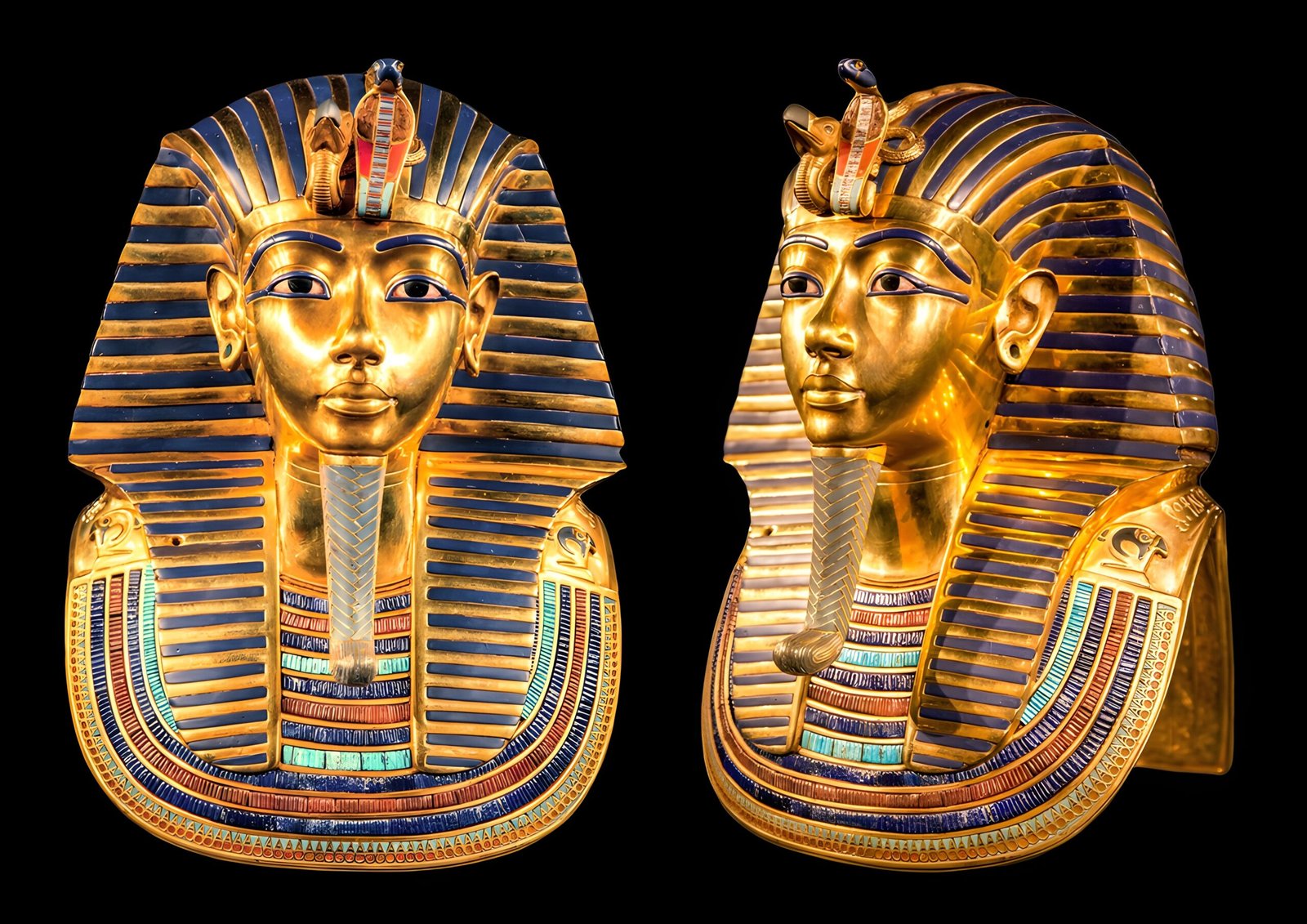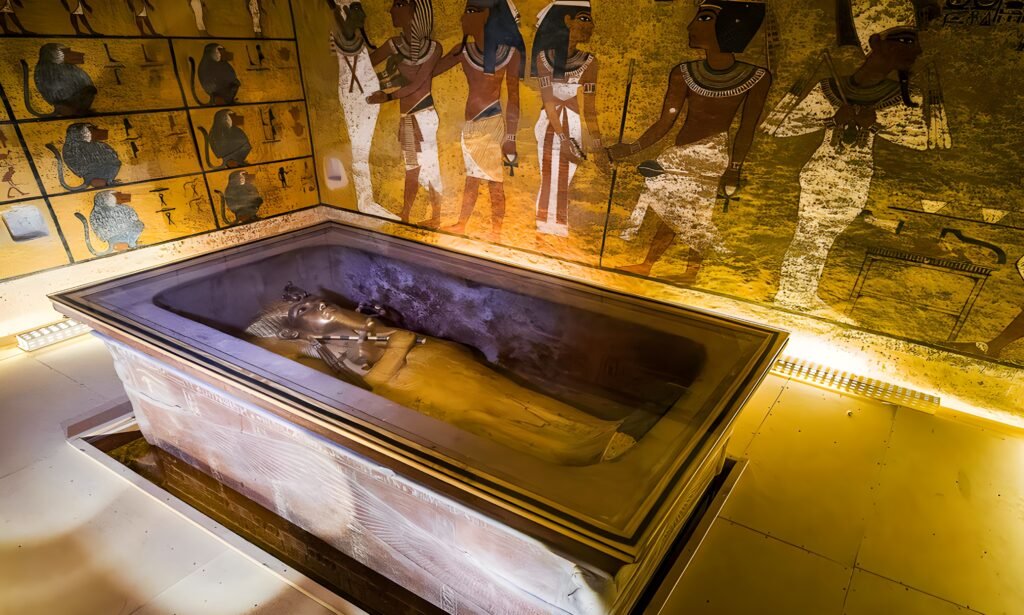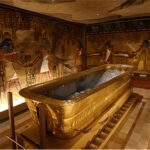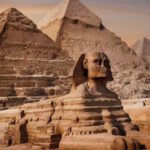Tutankhamun, often referred to as “King Tut,” is one of the most iconic figures of ancient Egypt. His short reign during the 18th Dynasty left a lasting impact on history, largely due to the discovery of his nearly intact tomb in 1922. This monumental find shed light on the opulence and cultural significance of Egypt’s New Kingdom and cemented Tutankhamun’s status as a symbol of ancient Egyptian splendor.

Tutankhamun mask
Who Was Tutankhamun?
Tutankhamun ascended to the throne around 1332 BCE at the tender age of nine. Born during a time of great religious upheaval, he was the son of Pharaoh Akhenaten, who introduced monotheism by promoting the worship of Aten, the sun disk. Upon becoming pharaoh, Tutankhamun played a crucial role in restoring the traditional polytheistic religion, reinstating the worship of Amun and other deities.
Though his reign lasted only ten years, Tutankhamun’s efforts to stabilize the nation after Akhenaten’s controversial rule marked a pivotal moment in Egypt’s history. His death at about 18 years old remains shrouded in mystery, sparking numerous theories about possible causes, including illness, genetic conditions, or even foul play.

Tutankhamun’s body
The Discovery of Tutankhamun’s Tomb
The discovery of Tutankhamun’s tomb by British archaeologist Howard Carter in November 1922 was one of the greatest archaeological finds of the 20th century. Located in the Valley of the Kings, the tomb (designated KV62) astonished the world with its nearly untouched condition and the treasures within.


Tutankhamun’s coffin
What Made the Tomb Unique?
- Rich Artifacts: Over 5,000 objects were found, including the famous golden death mask, jewelry, chariots, and ceremonial items. These artifacts provide invaluable insights into the life, religion, and craftsmanship of ancient Egypt.
- Preservation: Unlike many other tombs that were looted over the centuries, Tutankhamun’s tomb was largely intact, offering an unprecedented glimpse into the burial practices of pharaohs.
Carter’s meticulous work revealed that the tomb, though relatively small for a pharaoh, was a treasure trove of knowledge about ancient Egyptian society.
The Golden Death Mask
The golden mask of Tutankhamun is perhaps the most famous artifact from his tomb. Weighing over 10 kilograms and inlaid with precious stones like lapis lazuli and quartz, the mask is a masterpiece of ancient craftsmanship. It depicts Tutankhamun’s face with striking features, embodying the idealized image of a pharaoh as both a god and a king.

Tutankhamun mask
Tutankhamun’s Legacy in Modern Culture
Since its discovery, Tutankhamun has captured the imagination of historians, artists, and the public alike.
- Exhibitions: Artifacts from his tomb have toured the world, drawing millions of visitors.
- Pop Culture: His story has inspired countless books, documentaries, and films, making him a cultural icon.
- Scientific Studies: Advances in technology, including CT scans and DNA analysis, have allowed researchers to learn more about his health, lineage, and the cause of his death.
summary
Tutankhamun remains one of the most fascinating figures in history, not just for his role as a young pharaoh but for the extraordinary legacy he left behind. His tomb stands as a testament to the grandeur and sophistication of ancient Egypt, ensuring that his name will continue to echo through the ages.
Whether you’re a history enthusiast or a casual learner, exploring the life and times of Tutankhamun offers a captivating journey into the heart of one of humanity’s greatest civilizations.








Comments are closed.